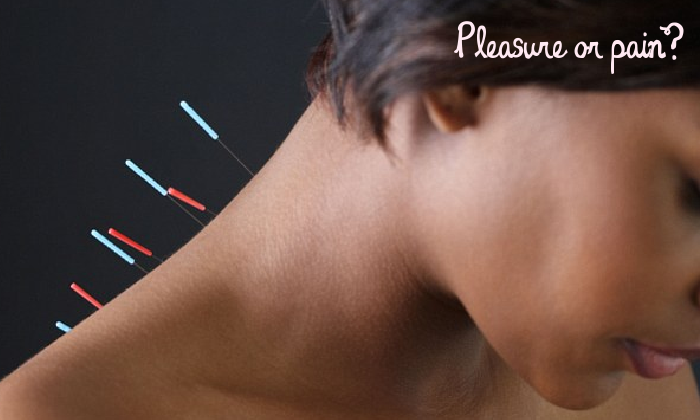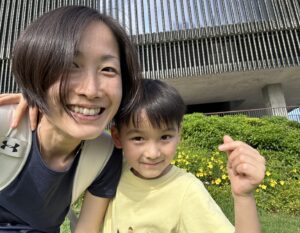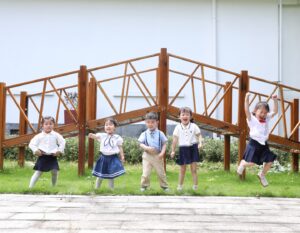

The idea of being stuck by needles to help alleviate pain may seem contrary to logic, but people have been reporting on the health benefits of acupuncture, a Traditional Chinese Medicine method of healing, for thousands of years.
Going to a doctor for a needle is a scary proposition for many people. I’ve had patients who are nurses tell me stories of big brawny men fainting during routine blood tests. So the idea of being stuck with multiple needles as a form of therapy seems counter intuitive. But that is exactly the idea behind acupuncture, one of the world’s oldest healing methods.
What Is Acupuncture?
Acupuncture is a form of therapy with its roots in Traditional Chinese Medicine (TCM). One of the main tenets of TCM is that each living organism has an energy of life or a force (insert Jedi reference) that animates it. This energy referred to as “Qi” (pronounced “Chee”) flows along highways called “meridians” within the body. These meridians are intimately connected to all the organ systems. This current of Qi helps to regulate the function of the entire body. The Chinese believe that optimal health is dependent upon a homeostatic flow of Qi. If the flow of Qi is too great, not enough or completely blocked, health problems arise. To restore the proper movement of Qi, acupuncture needles are inserted at specific points along the affected meridian. If performed correctly, the inserted needle will help to unblock the congested channel and allow the Qi to flow freely once again. Balance and optimal health will be restored.
History of Acupuncture
The use of acupuncture has been around for thousands of years, not only in China but in other countries including ancient Egypt, Saudi Arabia, Sri Lanka, India, Europe and South America. One of the oldest medical books in the world Huangdi Neijing talks extensively about acupuncture. This ancient medical text dates back to the Han dynasty in China (206 BC). Acupuncture gained mainstream recognition in the West during American President Richard Nixon’s trip to China in 1972. During the trip, one of his accompanying reporters James Reston required an emergency appendectomy. He received acupuncture after his surgery and was so impressed with the results that he wrote about it shortly after returning to the United States. By 1997, the U.S. National Institutes of Health (NIH) issued a formal statement acknowledging the safety and efficacy of acupuncture as a therapeutic intervention for a myriad of medical conditions.


How Can A Needle Help Healing?
The way that acupuncture works is not entirely certain. There are several theories proposed that try to explain the exact mechanism of action. One theory is that the trauma from the needle stimulates our body to release endorphins, chemicals that help to lessen pain. The World Health Organization (WHO) in 2003 conducted an extensive study on acupuncture. It concluded that acupuncture affects the body in several ways by:
- Triggering the release of certain immune system cells or chemical factors
- Activating the opioid system of the body to decrease pain
- Stimulating the pituitary gland and hypothalamus to release certain neurotransmitters or hormones that can enhance brain chemistry
In another study, Magnetic Resonance Imaging (MRI) was used to visualize brain activity during acupuncture. It was discovered that acupuncture decreases the activity in the limbic system of the brain which is partly responsible for our experience of pain. So in essence it boosts our threshold for pain tolerance. Other studies have shown some evidence that acupuncture may improve white blood cell activity and blood circulation as well as reducing triglyceride and cholesterol levels. Diabetics will be happy to know there are promising studies that indicate acupuncture may have an effect on regulating blood sugar levels.
Does It Hurt?
The needles used in acupuncture vary in their size and thickness (gauge). Thinner needles often aren’t even felt upon insertion. Thicker needles may cause a slight discomfort or quick twinge of pain. Once the needles are fully inserted the discomfort usually disappears. Treatments can last anywhere from 15 minutes to an hour. Patients will often fall asleep during a session, attesting to the comfort of this form of therapy.
How Many Treatments Are Required?
The number of sessions required depends on the patient as well as the condition being treated. Minor acute injuries may require 2-5 sessions while more serious chronic conditions may take several months before results are seen.


What Conditions Can Acupuncture Help With?
Acupuncture is used to treat a variety of health problems. The World Health Organization (WHO) and the NIH has formally listed numerous medical conditions that acupuncture can help with including:
allergic rhinitis, biliary colic, depression, dysentery, dysmenorrhea, facial pain, headaches, hyper/hypotension, knee pain, leukopenia, low back pain, fetal malposition, morning sickness, nausea, vomitting, neck pain, shoulder pain, post-operative pain, renal colic, rheumatoid arthritis, sciatica, stroke and tennis elbow.
The American Academy of Medical Acupuncture has its own list of conditions that acupuncture can help with. They suggest using acupuncture for sports injury strains/sprains, carpal tunnel syndrome and other repetitive strain disorders, tinnitus, anorexia, anxiety, heartburn or indigestion, ulcers, insomnia, nerve compression pain, pharyngitis, bladder and kidney infections, endometriosis, memory loss, multiple sclerosis, sensory disturbances and drug detoxification.
Acupuncture Safety or Side Effects
Acupuncture is one of the safest treatments available with very few side effects if performed by a properly trained professional. One study looking into the safety of acupuncture noted that out of 34,000 treatments, only 43 minor adverse events were reported (0.12%). Acupuncture can be used in conjunction with prescription medications or other forms of therapy. There are certain points that are contraindicated during pregnancy so it would be wise to ask the practitioner about these prior to treatment. Care should also be taken when needling areas over the lungs to avoid pneumothorax (puncture of lung tissue). Again the chances of any serious harm occurring are infinitesimally small. Given the minimal risk of side effects versus other types of therapy there should be strong consideration in recommending acupuncture as an early form of therapeutic intervention.
 View All
View All











 View All
View All





 View All
View All


 View All
View All












